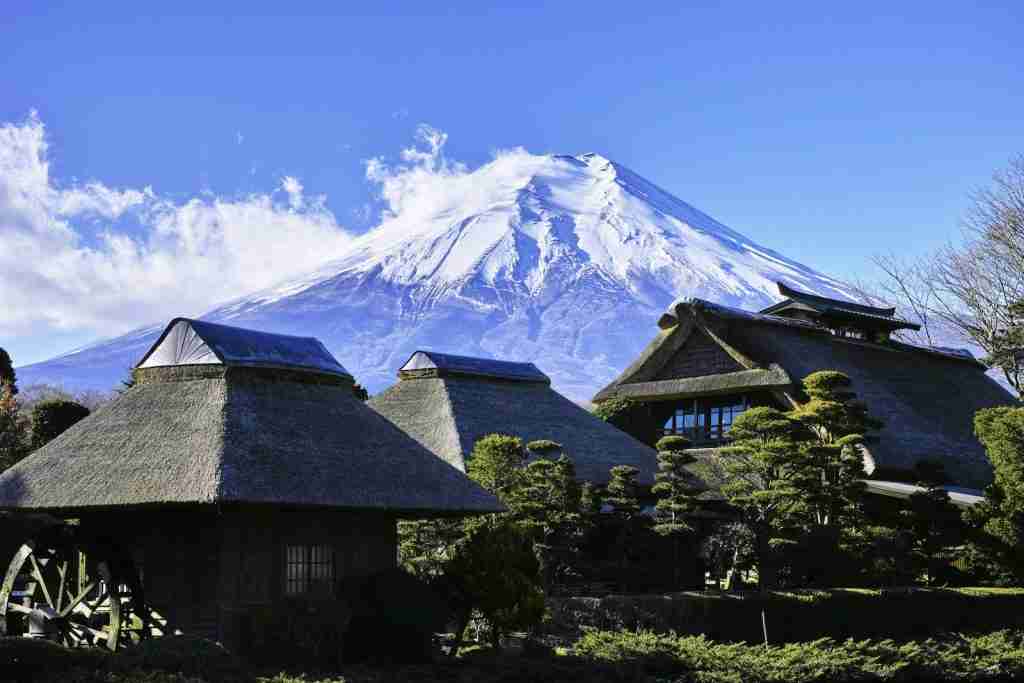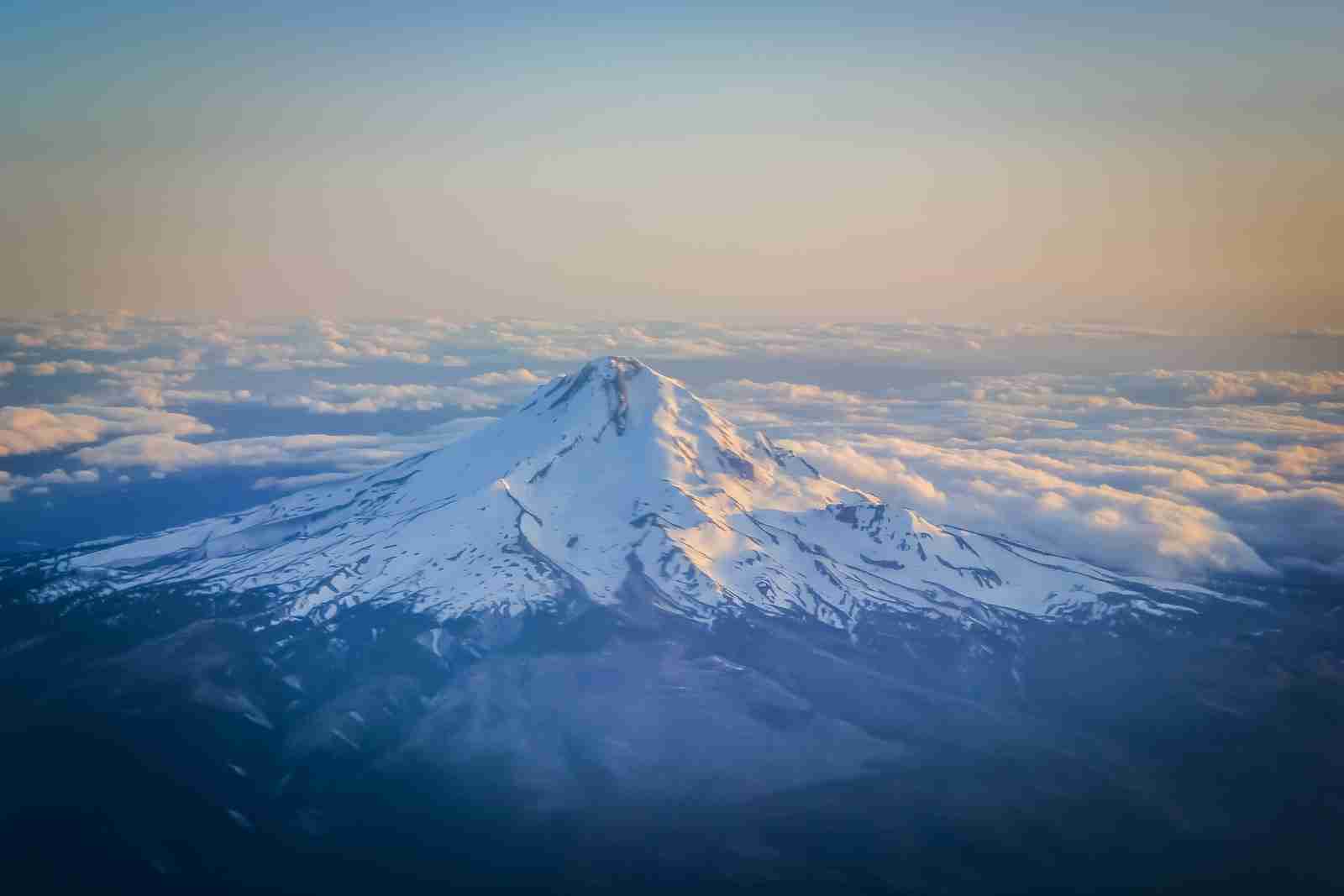23 Interesting Facts About Mount Fuji That You Don’t Want to Miss
1. Mount Fuji is a dormant volcano located in Japan.
Mount Fuji can be found near the Pacific coast of Japan. This breathtaking landscape features an eclectic blend of unique foliage.
At the center towers the iconic Mount Fuji, a dormant volcano made up of three distinct peaks set in an oval formation across an area over 2 miles wide and 4 miles long.
2. Mount Fuji is the highest mountain in Japan, standing at 3,776 meters (12,388 ft).
Mount Fuji is the highest mountain in Japan, looming majestically at 3,776 meters (12,388 ft). As an active volcano, it is an integral landmark of the country.
Its distinct silhouette is seen from across the country and its vastness cannot be understated.
3. Mount Fuji is one of Japan’s Three Holy Mountains and is considered a symbol of Japan.
Mount Fuji is a cultural icon for Japan and has gradually become recognized as one of its Three Holy Mountains.
Sitting proudly at 12,000ft above sea level, it has been a passion of Japan’s people since the Shinto religion regarded it as the home of their protector goddess.
By allowing people to reach the heavens from its remarkable summit hundreds of years ago, Mount Fuji continues to bring intricate joy and religious nurture to those who see an honest representation in Japan’s core in its presence.
4. The First recorded ascent of Mount Fuji was in the year 663.
In 663, history was made as the first recorded attempt to summit Mount Fuji occurred. This particular venture took place some 1,358 years ago and continues to inspire many of us today.
The endeavor in 663 demonstrated a courageous spirit that has been emulated ever since by climbers seeking to conquer Japan’s majestic symbol of power and beauty.
It truly is remarkable to think that twelve centuries before modern climbing techniques, humankind was characterized by ambition that drove them to ascend Mount Fuji.
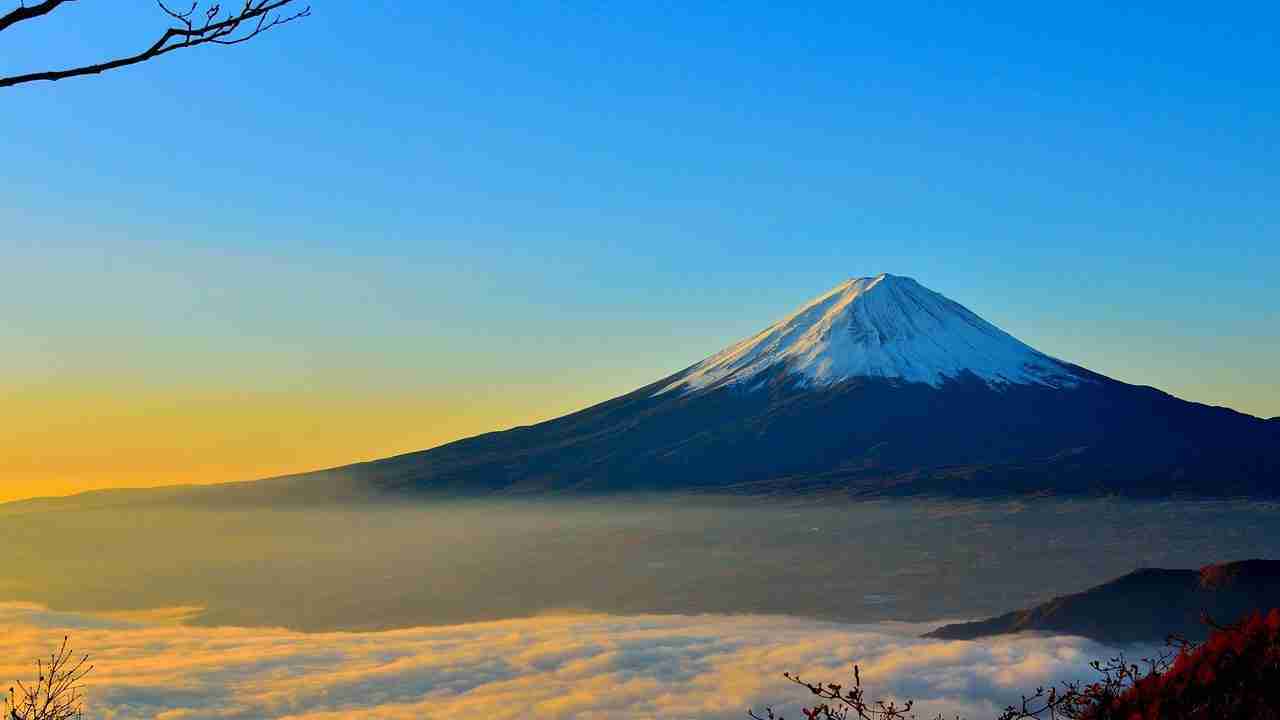
5. Mount Fuji is located about 100 kilometers (60 miles) southwest of Tokyo.
Mount Fuji, one of Japan’s renowned landmarks, is situated approximately 100 kilometers from Tokyo.
That’s the equivalent of around 60 miles, figuratively speaking. It rests triumphantly to the southwest of the capital city.
The views are unparalleled and have been depicted numerous times by artists in an effort to capture its majesty.
6. Mount Fuji is a UNESCO World Heritage Site and is considered a cultural icon.
The mountain is an impressive feat of nature and one that has been given the international seal of approval.
Drawn by its rugged slopes, UNESCO has recognized it as a World Heritage Site—marking its place among the iconic cultural sites and monuments around the world.
As a testament to its recognition, intrepid explorers from far and wide flock to experience awe and inspiration at this fabled mountain’s unique offering.
7. Mount Fuji’s symmetrical cone shape is recognized worldwide.
Mount Fuji is renowned for its impeccable structure; a symmetrical cone rising towards the heavens above. Its unique shape is distinctive and well-known, recognizable both in Japan and across the globe.
People around the world can Identify it simply by what most would consider mere artistic brushstrokes on paper.
Mount Fuji has climbed its way onto an international stage, and its silhouette has been admired for centuries.
8. Mount Fuji has been worshipped as a sacred site for centuries by the Japanese.
Since the 8th century, Mount Fuji has served a sacred purpose in Japan. For hundreds of years, it has been revered and held in the highest esteem by its people.
They pay homage to its spiritual beauty on a daily basis, many taking part in ceremonies or meditating atop its peaceful summit.
Songs have been written of its unparalleled glory, often depicting the breathtaking experience one feels within its wake.
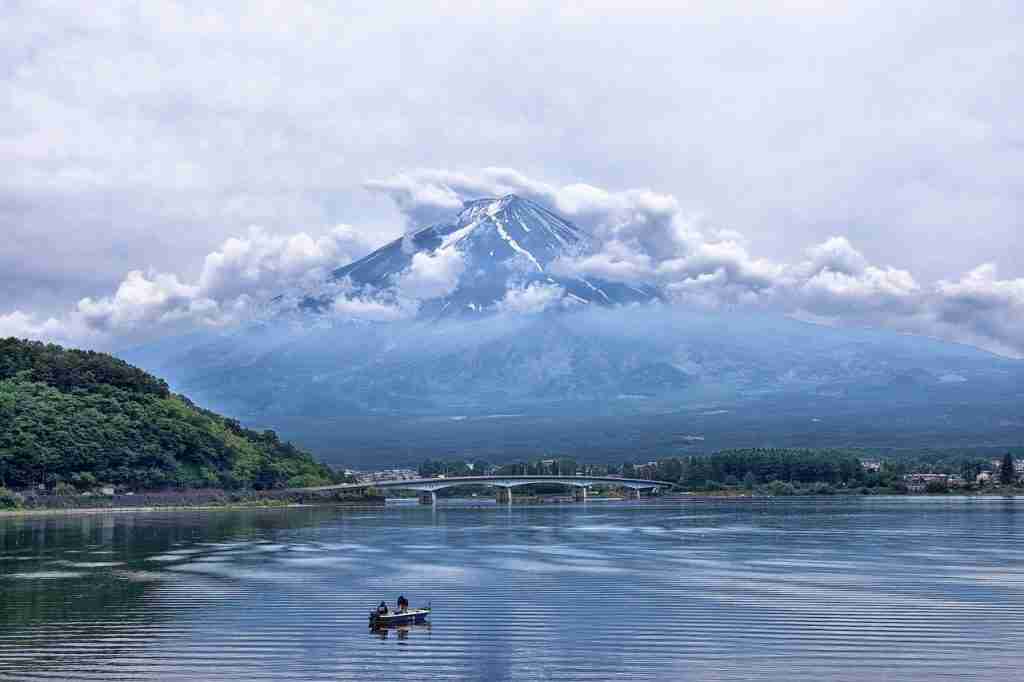
9. Mount Fuji has been a popular subject of Japanese art for centuries.
Mount Fuji’s timeless beauty has inspired Japanese artists for centuries, and it remains a prevalent subject in artworks today.
With its symmetrical cone peak and snow-capped summit year-round, the iconic volcano appears in works ranging from traditional painting to modern sculpture.
As it is an object of Japan’s strong national identity, Mount Fuji flourishes throughout Japan’s visual culture as both a symbol of nature’s power and an emblem of inspiration across artistic genres.
10. Mount Fuji is a popular tourist destination, attracting over 300,000 climbers annually.
Mount Fuji is a renowned destination for adventurers. Every year, approximately 300,000 intrepid explorers ascend Japan’s most well-known peak to unite with nature and test the limits of their spirit.
The trek to the summit is always energizing, postcard views abound, and locals embrace climbers warmly onto the mountain.
It’s an experience far different than anything city exploration offers, offering unmatched beauty and memories that will last a lifetime.
11. What is the climbing season for Mount Fuji?
he ascent to Mount Fuji is most accessible within a slim window of opportunity. Usually beginning in July and stretching up till September, the escape to one of Japan’s most treasured landmarks comes to life.
The climbing season approaches with relative brevity each year, and without prompt reverence can quickly elude trekkers anticipating the birds’ eye view of nearby empires or encountering an overwhelming abyss of snow-dusted landscape before them.
12. Mount Fuji has several trails that lead to the summit, including the Yoshida Trail and the Subashiri Trail.
Mount Fuji has an exciting and stunning path waiting to be explored. There are three geologically distinct trails that can lead adventurous adventurers to the summit of this iconic landmark; these are the Yoshida Trail, the Subashiri Trail, and the Fujinomigati Kaido Trail.
The Yoshida trail, officially starting in the middle of previous fifth station is over 800 years old, it is Japan’s oldest and most beloved trekking route for those piling up Mount Fuji – it stands as a shrine that pairs mountain worshippers with spectacularly panoramic views from its peak points from a height of 3776 meters.
The Subashiri Trail boasting picturesque woodlands on its way up to the 7th station presents immaculate emerald-colored hills among an appealing skyline.
13. The last eruption of Mount Fuji was in 1707, but it is still considered an active volcano.
Mount Fuji has a long history of eruptions, with the last occurring over 300 years ago in 1707. Despite its advanced age, Mt. Fuji is considered challengingly active – far from being dormant for centuries.
Volcanology experts regularly monitor seismic activity, noting how the mountain can shake violently with even minor tremors recorded in its jaws.
Studies suggest that there may still be beauty and destruction left to experience in a potential eruption from Japan’s loftiest peak at over 12,000 feet.
14. The Mount Fuji is located within the boundaries of two prefectures: Shizuoka and Yamanashi.
Mount Fuji is a magnificent and iconic mountain situated in two Japanese prefectures. Its majestic beauty stretches deep within the borders of both Shizuoka and Yamanashi, making it undoubtedly one of the greatest and most extensive landforms in the country.
Formed thousands of years ago, it’s estimated to be around 3,776 meters tall and has long been a source of reverence among both locals and visitors alike. Mount Fuji offers many activities for its admirers – from hiking, climbing, or just admiring the view. Wherever you are in Japan – Mount Fuji a magnificent symbol of nature stands ready to awe those who take the time to visit it.
15. Did you know the Base of Mount Fuji spans over 400 square kilometers (150 square miles)?
Mount Fuji is a grand beauty, towering atop the tranquil Japanese countryside.
Spanning over 400 square kilometers (150 square miles), its base is a significant area of the hillside’s breathtaking view.
Captured in artworks, renowned photography, and cherished legends, those who view Fuji perceive its power yet also understand why it holds such a special place within Japanese culture.
16. Mount Fuji is surrounded by several lakes, including Lake Kawaguchiko and Lake Yamanakako.
Mount Fuji is no ordinary peak. It’s surrounded by a beautiful mosaic of many lakes, all tucked between rolling hills, creating an unforgettable location.
Lake Kawaguchiko is perhaps the most famous Japanese alpine lake, and famed for its stunning mirror reflections with Mount Fuji in the background. Lake Yamanakako complements Kawaguchiko’s beauty with its waterfront villages that border the azure Blue and gentle green color gradient.
Using small pleasure boats visitors can easily take in sights of both these lakes dispersed against the breathtaking panoramic views of Mountain Fuji making this destination a true tourist hot spot.
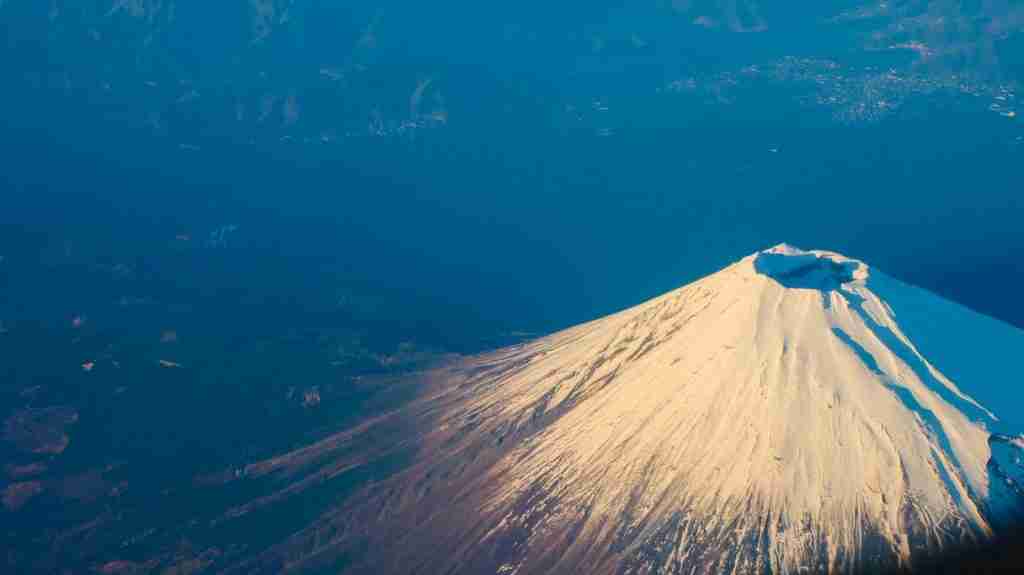
17. The snow-capped peak of Mount Fuji is often referred to as “Diamond Fuji”.
Mount Fuji is a characteristic mountain of Japan and its snow-covered peak is recognized throughout the world. Deep in Japanese culture, this mountain has been praised and admired as far back as ancient times.
This mountain holds an iconic allure within perfect symmetry and serenity, to the point where it’s often referred to as “Diamond Fuji”.
The reflection that’s cast in glistening jewel-like layers makes this iconic symbol even more beautiful because there isn’t possibly another sight like it on earth!
18. Mount Fuji is part of the Fuji-Hakone-Izu National Park.
Mount Fuji is one of Japan’s “Three Holy Mountains”, and an iconic part of the country’s landscape. It forms a focal point in the wider Fuji-Hakone-Izu National Park, world-renowned for its picturesque vistas and natural beauty.
The park covers nearly 2,500 square kilometers at the foothills of Mount Fuji, sprawling across Yamanashi, Kanagawa, and Shizuoka prefectures in close proximity to Tokyo.
Its diverse terrains create a range of beautiful scenes – pebble-laden beaches, petrified lava flows, tranquil village duos and verdant woodlands.
19. The first women’s climbing club in Japan was established in the 19th century to climb Mount Fuji.
To peak, their interest in the preservation of national heritage and the natural environment, a group of women decided to embark on a pilgrimage to Mount Fuji.
This ultimately led to the formation of Japan’s first-ever women’s climbing club in the 19th century.
Aiming to expand their collective knowledge and expertise, these intrepid climbers embraced the challenge of scaling one of Japan’s highest peaks–Mount Fuji.
The ascent represented much more than just a physical challenge–it symbolized overcoming societal barriers amidst increasing opportunities for self-determination and empowerment.
20. Did you know the mountain is home to several species of flora and fauna, including the Japanese macaque and the black woodpecker?
The untouched wilderness of the mountain makes it a truly special place. It is host to many species of plants and animals, with close observation revealing much about Earth’s biodiversity.
Among those that inhabit this habitat, the Japanese macaque and the black woodpecker can be found among the many others that make a home in this majestic setting.
Those lucky enough to grace its soul-preserving presence are sure to have experiences they won’t soon forget.
21. Mount Fuji’s crater is approximately 800 meters (2,620 ft) in diameter.
The mountain’s crater is an incredible sight to behold. It has a diameter of approximately 800 meters which, in feet, comes to a staggering 2,620.
Witnessing its sheer vastness is something that must be seen with one’s own eyes. Scientists estimate that the depths of peakmajestic structure holds countless secrets and wonders, waiting to be discovered by the brave adventurers willing to make the trek up its slopes.
People from far and wide come annually to take in the sight of such spectacular beauty.
22. Mount Fuji is part of the Pacific Ring of Fire, an area with a high concentration of active volcanoes.
Mount Fuji is an active volcano located in Japan. It is a part of the Pacific Ring of Fire, a daunting chain of violent volcanoes that circle the Pacific Ocean basin.
As the name implies, this area has more active volcanic eruptions than anywhere else on Earth. Mount Fuji evolves roughly with each eruption as gases, ash and sharp strata intertwine, adding texture and shape.
Seismic activity makes each eruption unpredictably powerful and brightly glow, forming a spectacle of nature’s capabilities.
23. There is a museum dedicated to Mount Fuji located in Fujinomiya, Japan.
Situated in Fujinomiya, Japan is a museum specifically dedicated to honor the infamous Mount Fuji.
This majestic museum towers with enlightenment and knowledge about the renowned symbol of Japan and shares tales of several folklores that have evolved around the volcano.
Guests can explore the beautiful exhibits, soak in emotion through vibrant paintings, learn about traditional Japanese history, engage interactively with multimedia technologies, quite aptly get an up close view of classical artifacts, and even find perennial souvenirs!
